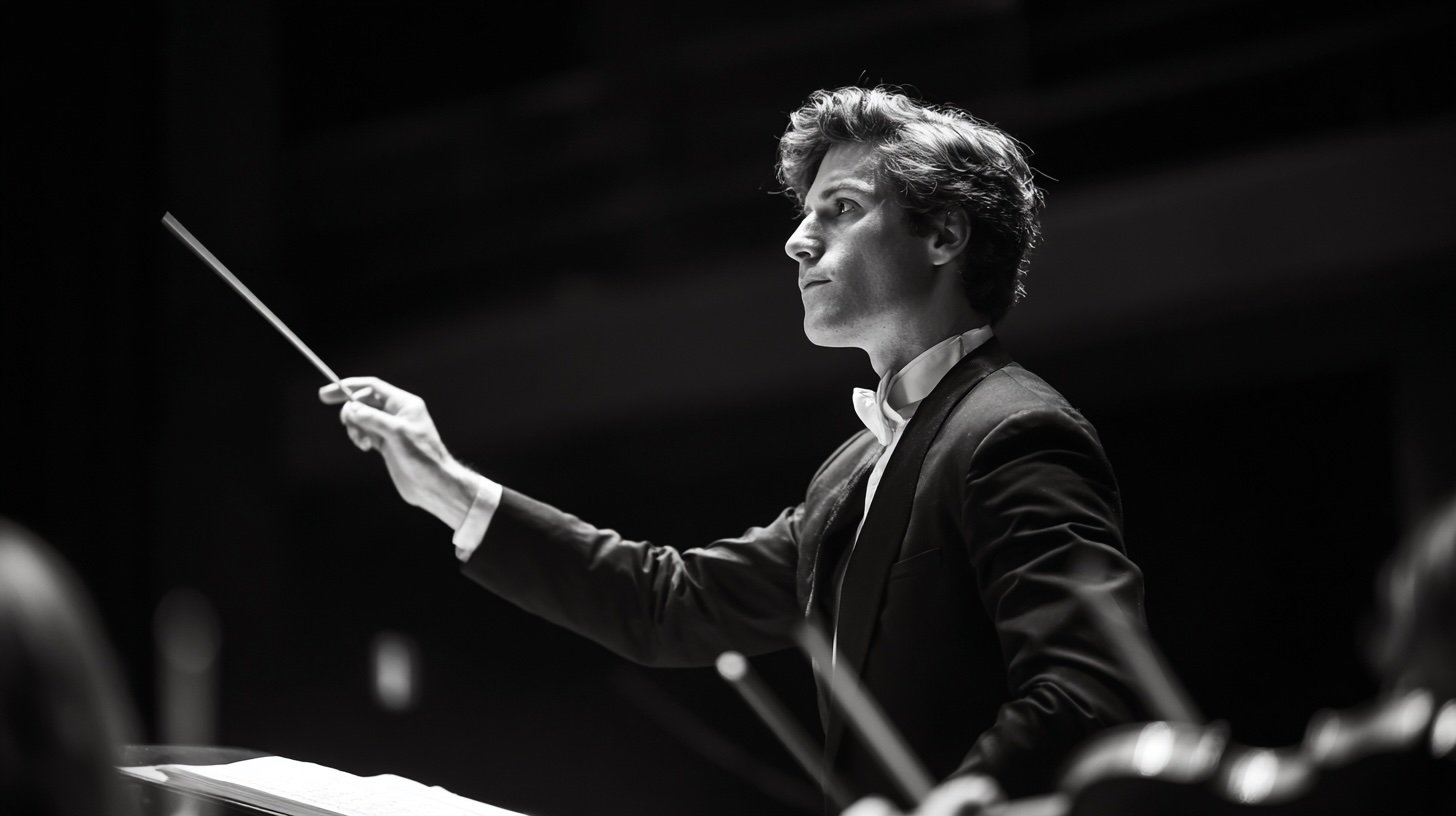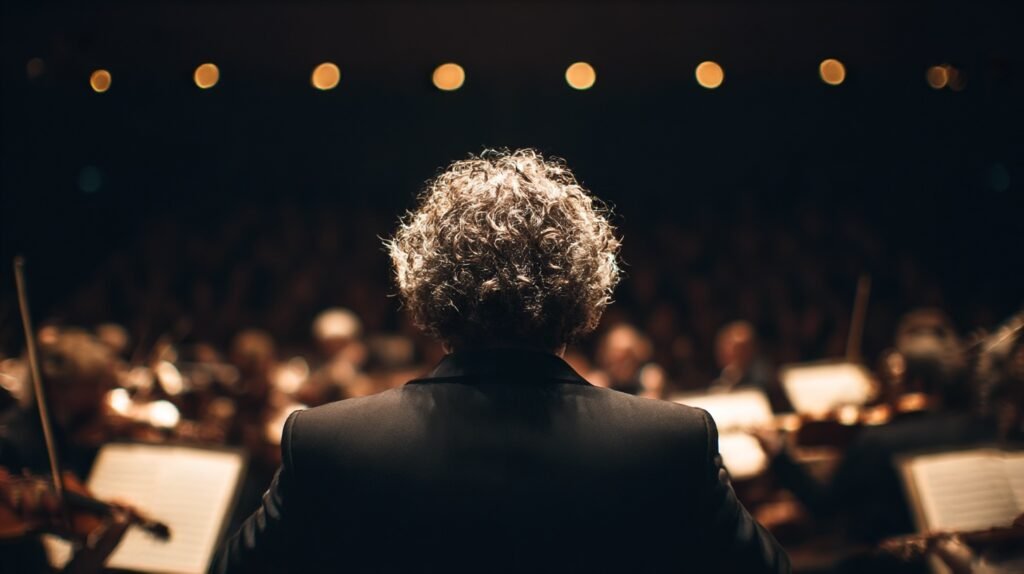The Surprisingly Dramatic Origins of the Orchestra Conductor
Picture it: Paris, 1820s. A man in coattails, white gloves and an air of absolute certainty climbs up to a raised platform. He turns his back to the audience, raises a long baton like a sorcerer preparing a spell, and gestures with the kind of gravity usually reserved for life-saving surgery or cake-cutting at royal weddings. The orchestra plays. Thus begins the curious, often comically intense, career of the orchestra conductor.
Before the conductor became the dramatic centrepiece of classical music, orchestras somehow managed without one. Yes, you read that right. For centuries, music ensembles functioned more like musical communes. In Renaissance and early Baroque times, coordination duties typically fell to someone who was already busy playing an instrument—usually the harpsichord or violin. Imagine trying to shred a virtuosic solo while giving eye signals, foot taps, and the occasional glare to thirty other people. It was multitasking of the most aristocratic kind.
One of the earliest known attempts at formal conducting ended badly. Very badly. Poor Jean-Baptiste Lully, court composer to Louis XIV, decided to keep time during a performance by tapping a long wooden staff on the floor. A noble idea. Except, during one enthusiastic flourish, he accidentally smashed the staff into his foot. The injury became gangrenous. He died. From conducting. This is perhaps the most French way to die: fatal enthusiasm in service of art.
So it’s safe to say there was room for improvement.
As orchestras grew in size during the 18th and early 19th centuries, so did the need for coordination that didn’t involve self-harm. Cue the rise of the dedicated conductor. The shift was gradual, with violinists like Johann Stamitz giving direction while still playing, but eventually, the idea of a non-playing leader began to make sense. Think of it as the leap from shared bike to high-speed train. Someone had to drive.
Felix Mendelssohn gets a lot of credit for formalising the role. He conducted the Leipzig Gewandhaus Orchestra with such clarity and charisma that the position took on a whole new prestige. Conducting was no longer about counting beats; it became performance art. And let’s be honest, it takes a special type of person to stand in front of a hundred musicians and wave their arms with the confidence of a Roman general.
And then came the batons. Not the edible kind. No, these were slim sticks designed to extend the expressive power of the hand. Beethoven’s friend, the violinist Louis Spohr, is said to have introduced the baton around 1820. Before that, conductors used rolled-up paper, fingers, or just their very intense eyebrows. Spohr realised that a stick was easier to see than a twitchy hand and far less painful than a Lully-style staff. It caught on.
From then on, the conductor became the boss. The alpha. The one person allowed to be dramatically late and still applauded. But the role wasn’t just theatrical. Conductors held the musical vision, shaping phrasing, tempo, balance, and dynamics in real-time. Some wielded tyrannical control. Arturo Toscanini famously hurled tantrums and batons with equal fervour. Herbert von Karajan, with his silver hair and unblinking stare, conducted with eyes closed, trusting that everyone followed his will by sheer telepathy.
Others were more democratic. Leonard Bernstein, all flamboyance and heart, danced on the podium and made orchestras fall in love with him. He had the vibe of a manic poetry professor who somehow also played jazz and hung out with God.
But what exactly is a conductor doing up there? Besides interpreting the music, the conductor is also the translator between composer and orchestra, especially for massive, complex works like Mahler symphonies or Wagner operas that stretch longer than most dental surgeries. Without someone guiding the architecture of the sound, it would be chaos. Beautiful chaos, but still.
Of course, some orchestras flirted with rebellion. The conductor-less model made a brief comeback in the 20th century with groups like the Orpheus Chamber Orchestra in New York. They believed in musical democracy. Everyone had a say. Rehearsals became part group therapy, part political summit. And while the results could be electrifying, they also required intense collaboration and absolute mutual respect. Which, in any room with three or more violinists, is asking quite a lot.
The conductor has also become something of a meme. Let’s not pretend otherwise. The image of a wild-haired figure flailing on a podium like a caffeinated octopus is iconic. Cartoons love it. Hollywood too. You can practically hear the crescendos just by watching their eyebrows.
But beneath the stereotypes lies immense skill. Orchestra conductor must know the entire score—every note of every part. They must cue instruments at exactly the right time, correct tempo slips, and balance sound like a human mixing desk. All while staying ahead of the music and looking, at minimum, profoundly inspired.
Women conductors? That took a while, of course. The classical world, never known for its blazing speed on gender issues, took over a century to start handing out the baton to women. Trailblazers like Nadia Boulanger, the first woman to conduct the Royal Philharmonic Orchestra in London, cracked the glass podium in the 20th century. Today, conductors like Marin Alsop and Mirga Gražynytė-Tyla are leading major orchestras with brilliance, redefining what authority looks like in tails or trousers.
One of the curious facts about conducting is that its gestures are largely a made-up language. There’s no global standard. One orchestra conductor ’s elegant swoop is another’s frenzied jab. Some conduct in four, some in two, some barely move their arms and just radiate meaning through sheer presence. The orchestra, magically, adapts.
Furtwängler was known for stretching time like warm toffee. Bernstein made love to every bar. Toscanini attacked the air like it owed him money. No two conductors interpret a score the same way, which is why Beethoven’s Fifth can sound like a march to doom or an intergalactic disco, depending on who’s holding the stick.
It’s also a job of immense stamina. Mahler’s symphonies are cardio marathons. Wagner’s operas demand emotional fortitude somewhere between Shakespearean drama and hostage negotiation. Conductors sweat. A lot. There are memes dedicated to their shirt changes alone.
Let’s not forget the rehearsals. Conductors have to charm, direct, correct, inspire, intimidate, and occasionally bribe dozens of professional musicians who all think they know better. It’s a mix of leadership, pedagogy, and spiritual coaching. Diplomacy helps. So does coffee.
They’re also international jetsetters, swooping into cities for guest appearances like very tired superheroes. The airport lounge is their second office. The baton case: their Excalibur. And if they’re lucky, they get a moment after the applause to shake hands with the concertmaster, turn to the crowd, and bow with the grace of someone who somehow made it through Bruckner without imploding.
There’s something irresistibly theatrical about the whole setup. The silence before the downbeat. The collective breath. The hush. The first gesture. And then—sound, glorious sound, erupting like magic from a hundred souls at once.
And it all starts with someone who dares to raise their arms and say, with complete confidence, “Follow me.”

